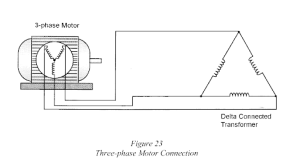Part 6 – Transformer Connections
Methods of Connecting a Transformer
There are three identical single-phase transformers that can be connected together to form a three-phase transformer. The voltage/amperage formula for a single-phase transformer is: VA = volts (E) x amperes (I), usually in kVA.
Calculating Current in a Transformer
An example of calculating current in a transformer would be:
Consider a 360/720 90 kVA transformer. If 360 V is applied to the primary windings, 720 V will be available at the secondary windings.
The secondary current available would be:
![]()
![]()
![]()
![]()
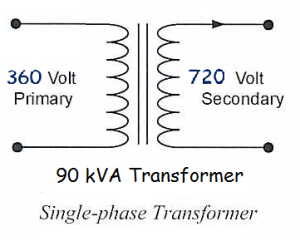
![]()
![]()
Total capacity of the three single-phase transformers connected in a three-phase arrangement:
![]()
Connecting a Transformer
There are two methods of connecting three individual sets of windings in a three-phase transformer, which are the star method and the delta method.
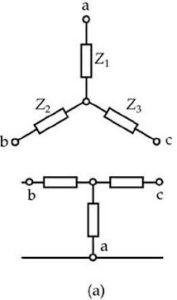 |
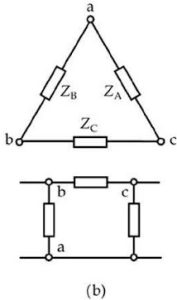 |
| Star Connection | Delta Connection |
The star (Wye) method is a three-phase line current that is equal to the current in any one phase. The three-phase line voltage is equal to √3 x the voltage in any one phase. The delta method is a three-phase line voltage that is equal to the voltage in any one phase. The three-phase line current is equal to √3 x the current in any one phase.
Three-phase 225 kVA transformer with both primary and secondary windings connected in Delta.
The current is:
![]()
![]()
A delta-delta connection current is:
|
|
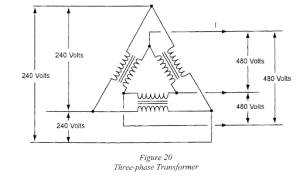 |
Delta-star connection – star provides two voltages: line voltage = 831 V and phase voltage = 480 V. Current is:
|
*Uses line voltage
|
|
|
A Step-Down Transformer
Click on the image hotspots to explore the functions of as step-down transformer.
There are only four possible three-phase transformer combinations, which are:
- Delta to delta
- Delta to star
- Star to delta
- Star to star
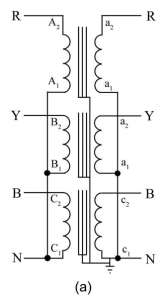 |
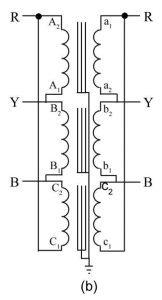 |
| Delta-delta connection | Star-star connection |
The use of delta or star depends on the application. A delta connection is for balanced loads. A three-phase motor is an example of a balanced load in which each of the windings of the motor has identical impedance. It only requires three supply conductors. A star connection is for unbalanced loads and requires four wires.
Unbalanced Load
Click on the image hotspots to explore the functions of an unbalanced load.
Here is a schematic diagram of a three-phase motor connected to a delta-configured transformer, depicting the electrical connection between them.
